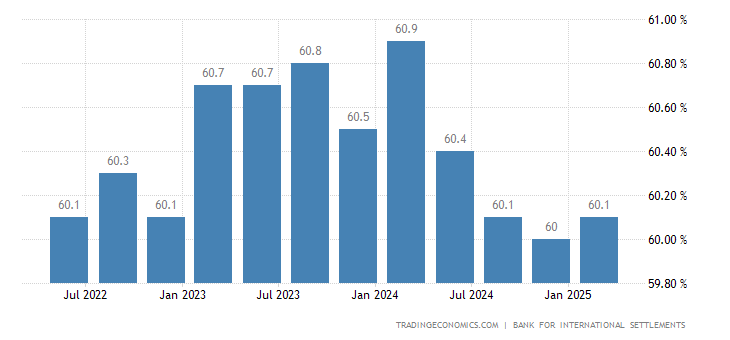This is an excellent article debunking the myth of China "middle income trap". By 2020 China should be able to reach the goal of becoming high income country. Even now the wealthier coastal province should be there now. Via Beijing walker. The western taunt of"China middle income trap" is misplaced forgetting how long it take them to become high income country
It took advanced economies decades, even centuries, to advance from low income to high income economies. Yet, today many of them demand that emerging economies should do the same in a matter of years. In Latin America, such policies cost "lost decades" not so long ago.
How China Can Surpass The Middle-Income Trap
Jan. 31, 2018 3:20 AM ET
By Dan Steinbock
China will surpass the middle-income trap by continuing to implement structural reforms and focusing on economic development. The lesson to other emerging economies is to distinguish good growth policies from self-serving agendas in the advanced West.
According to the World Bank, high-income economies ($12,236 or more) include the US, Western Europe and Japan, while upper middle-income economies ($3,956 -$12,235) feature Turkey, Russia, Brazil and China, among others.
In the past, many countries have attained moderate living standards, yet failed to graduate to the next level. China entered the ranks of the "upper-middle-income" countries in the early 2010s. But can the country avoid the middle-income trap?
Overcoming the middle-income trap
China has great potential to overcome the middle-income trap. First of all, its world-historical growth record speaks for itself.
Second, the rebalancing of the economy from exports and investment to consumption and innovation is proceeding according to the expected trajectory.
Third, new growth targets indicate that policymakers are well attuned to the need to move from simple growth to higher-quality development. Also, the deleveraging has slowed credit growth and will significantly lower local government debt in the late 2010s, which will ensure higher-quality growth.
Finally, the huge size of China's population disguises regional progress. In relatively wealthier megacities, including Shanghai, Shenzhen and Beijing, the middle-income trap may already have been surpassed.
What makes Chinese progress so impressive is that, unlike other major economies, China is executing structural reforms, which has proven so difficult in other countries.
America is so polarized that some policymakers prefer a government shutdown to a credible, bipartisan medium-term debt-cutting plan. In the eurozone, the sovereign debt crisis has caused huge dislocations and a cyclical recovery alone is not enough to resolve the structural crisis. In Japan, half a decade of massive monetary injections has not achieved adequate inflation.
Economic development is the priority
In the 19th National Congress of the Chinese Communist Party (CPC), President Xi Jinping stressed that "development is the foundation and key to addressing all problems." China's medium-term policies must cope with these challenges in the "new normal" of the international environment, even as the country's "uneven and inadequate development" is at odds with "people's ever-growing demand for better life."
Achieving these objectives requires less uneven coverage of pension and health care insurance nationwide; basic public services; rejuvenation of rural areas through land and fiscal reforms; appropriate scaling of farming operations; increased spending on high school education and vocational training; more affordable housing; and extended rural land leases.
In China, economic reforms are central to the rebalancing, which could lift another 70 million people from poverty by 2020, just as it is turning the mainland into the leading actor in global efforts to combat climate change through innovation.
Not all Western lessons work in emerging world
To avoid the middle-income trap, the ability to distinguish between appropriate policies and misguided prescriptions is pressing for several reasons. First, there are the historical lessons.
It took advanced economies decades, even centuries, to advance from low income to high income economies. Yet, today many of them demand that emerging economies should do the same in a matter of years. In Latin America, such policies cost "lost decades" not so long ago.
Second, there is the matter of size. Advanced economies like to tout the success of British or American industrialization as a blueprint to emerging countries. Yet, when Britain and the US began industrialization, the former had barely 30 million people and the latter around 40 million (about the same as in Shanghai and Guangzhou alone). Laissez-faire doctrines fare particularly poorly in emerging economies, which are larger by magnitudes.
At the regional level, some areas of China's wealthier coastal megacities have already graduated into the high-income category, but national economy is still amid the transition. So the real question is not to compare China with industrializing Britain or the US, but to ask, "How long has it taken for Europe to industrialize, from the first industrial centers in the UK to rural Romania?" In the latter, more than 25 percent of people are still employed in agriculture.
If, after two centuries, industrialization is still not completed in peripheral Europe (in which population remains only half of that in the mainland), why is China expected to complete it in three decades?
Third, there is the issue of wealth. Advanced economies were pretty prosperous even before they industrialized, thanks - not to democracies and free markets but - to imperial regimes that grew wealthy on the back of infant-industry protection and protectionism, brutal colonialism, or both. In the mid-19th century Britain and late 19th century America, per capita incomes were at the level that Russia first reached in the 1950s, Brazil around 1960, China in the early 1990s and India just a decade ago.
The trick to avoid the middle-income trap is to avoid those development doctrines that reflect self-interested doctrines in the advanced world. The real task is to concentrate on economic development that supports progressive increases in living standards of ordinary people in emerging economies.






